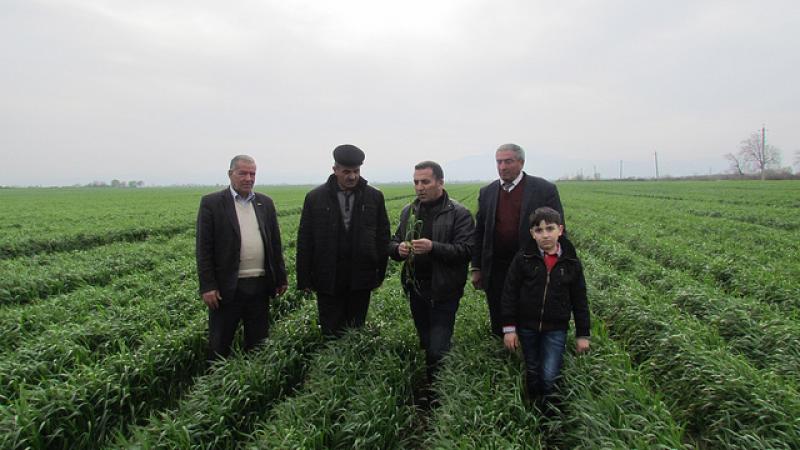Predicting and responding to the impacts of climate change in Central Asia

Poor understanding of the dynamics of climate change often prevents the development of sound adaptation strategies. An ICARDA assessment in Central Asia is changing this - providing the information that policy makers need to strengthen the resilience of the region’s agricultural sector.
How will climate change affect the agricultural sector, and how significant will its impacts be? The answers to these questions will have serious implications for our ability to produce sufficient food for a growing global population. Unfortunately, a lack of data and a poor understanding of climate change dynamics mean that in many parts of the world we can only guess.
One such region is Central Asia. Although clearly suffering from the impacts of climate change – water is becoming increasingly scarce and temperatures rising - insufficient analyses have prevented the development of adaptation strategies. There have also been few assessments of the impact on agro-ecosystems and farm incomes, and limited analyses of the environmental, economic, and social trade-offs generated by different adaptation options.
Studying the impacts of climate change at the farm level in Central Asia
In response, ICARDA assessed farm-level climate change impacts on three strategic crops – cotton, potatoes, and wheat – that are crucial for rural economies and food security across Kazakhstan, Kyrgyzstan, Tajikistan, and Uzbekistan. The bio-economic farm models simultaneously consider biophysical changes and management decisions in various farming systems – on farms and across whole sectors.
Climate change scenarios were first spatially down-scaled to the local level, which were then used by crop simulation models – a combination that allowed researchers to consider climate change’s impact on the productivity of specific crops. These models were, in turn, calibrated with crop experimental data and actual farm management strategies collected from farm surveys. The result: insights into the impacts of climate change on farm income volatility and potential adaptation strategies to improve farm income.
How will climate change impact Central Asia?
The climate change scenarios suggest that the regional impacts of Climate Change will vary – their severity and scale dependent on socio-economics and agro-ecological characteristics. The impacts are summarized below:
Uzbekistan: Uzbek farmers stand to gain from more favorable weather conditions for crop growth in the near future (2010-2040), but revenues are expected to decline beyond 2040 due to the combined threat of higher temperatures and water scarcity.
Kazakhstan: A slight increase in revenue is expected in arid and semi-arid areas – although there will be greater variance in crop yields due to climate uncertainty. Farmers in sub-humid areas will also benefit from increased temperatures and precipitation.
Kyrgyzstan: the impact of climate change on incomes in semi-arid areas will be neutral in the near future, but positive thereafter. Farmers in sub-humid zones will probably have higher than expected incomes in near (2010-2040) and late future years (2040-2070).
Tajikistan: while wheat revenues may remain constant, cotton revenues are expected to decline if current management strategies are maintained. Overall, impacts are positive in semi-arid and humid zones of Tajikistan, but productivity in arid regions will suffer.
These insights into the impacts of climate change will inform decision-making – giving policy makers the tools and knowledge they need to develop robust adaptation strategies and strengthen the resilience of Central Asia’s agricultural sector for decades to come.
